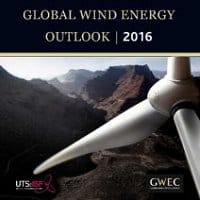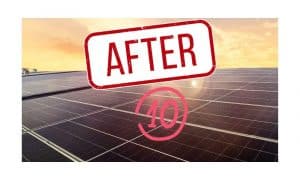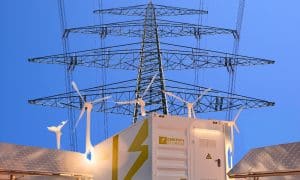Wind power could provide 20 percent of the world’s electricity supply by 2030 as nations begin curbing carbon emissions in line with commitments made at last year’s Paris Climate Summit.
According to a new report from the Global Wind Energy Council (GWEC), big decreases in the price of renewable energies like wind and solar over recent years have made these technologies economically attractive in most markets, with wind power in particular expanding rapidly in emerging nations.
The Council’s biennial Global Wind Energy Outlook outlines four scenarios for the future of wind in the world’s energy mix out to 2020, 2030 and 2050.
Under the Advanced Scenario, wind capacity could reach a total 2,110 GW by 2030; supplying up to 20 percent of global electricity; creating 2.4 million new jobs and reducing global carbon dioxide emissions by more than 3.3 billion tonnes per year.
Under this scenario, annual global wind investment would total about €200 billion (~ AUD $285 billion).
“Now that the Paris Agreement is coming into force, countries need to get serious about what they committed to last December,” said Steve Sawyer, GWEC Secretary General. “Meeting the Paris targets means a completely decarbonised electricity supply well before 2050, and wind power will play the major role in getting us there.”
In its report, the GWEC uses the different scenarios to explore the future of wind power in a decarbonised world. The baseline model is the International Energy Agency’s New Policies Scenario (NPS), based on national and international emission reduction targets adopted during the Paris talks (COP21) in 2015.
The NPS is set against the IEA’s 450 Scenario, which outlines a solely supply – rather than policy – based approach to limiting a global temperature rise of 2 degrees Celsius by halting the concentration of greenhouse gases in the atmosphere at 450 parts per million carbon-dioxide equivalent (ppm CO2-eq) in the long-term.
The GWEC’s Moderate Scenario uses the much the same baseline criteria as the IEA’s NPS, and assumes most governments have enacted the renewable energy and carbon reduction policies agreed to at COP21, albeit at a modest level. Out to 2020, the Moderate Scenario modelling coincides neatly with annual market forecasts for growth in the wind energy sector, before global uncertainties make accurate price forecasting impossible.
The Advanced Scenario is the most optimistic model, and assumes total commitment to renewable energy targets and industry recommendations by governments. It also assumes a universally agreed objective of keeping global mean temperature rise below 2°C above pre-industrial temperatures.
“Wind power is the most competitive option for adding new capacity to the grid in a growing number of markets,” said Mr Sawyer, “but if the Paris agreement targets are to be reached, that means closing fossil fuel fired power plants and replacing them with wind, solar, hydro, geothermal and biomass.”
“That will be the hard part,” he says, “and governments will have to get serious about it if they are to live up to the commitments to which they have now bound themselves.”

















































